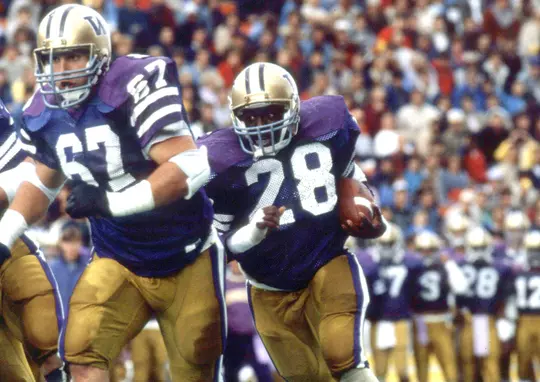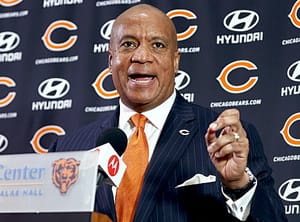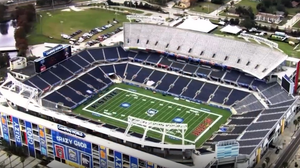Nickels and Dimes: 1980 Speculation (and the Pac-10's Usual Suspects)
What should you expect to see in a national champion?

Moving from a four to a twelve team playoff is possibly the single biggest change in CFB history in terms of impact on the eventual national champion. There may be some fatigue in discussing the CFP, but I hope to include some discussion on occasion and in a different way than usual.
To begin, I'm pretty confident that you should get used to 2-loss teams winning the national title like Ohio State did last year. The regular-season matters less. Every B1G and SEC team can be relatively sure that a 10-2 regular-season will get you an at-large bid (maybe not with Indiana's schedule last year...). And frankly, it's not just because the regular-season has been de-emphasized. A college football season only has 12 or 13 data points. Not much separates a 12-0 team from a 10-2 one. (How close did OSU come to winning in Eugene last year? If so, they both go 11-1.)
Going back historically, it has regularly, like every 3-5 years, been the case that you could identify a two-loss team that probably would've been among the betting favorites in a 12-team playoff. I would nominate 1981 Penn State, 1984 Nebraska, 1988 Michigan, 1990 Miami, 1996 Nebraska, 2002 USC, and 2006 USC as teams that would've been among the favorites in their respective years. (I would've bet heavily on 1990 Miami and, especially, 2002 USC winning it all.) Now, once Saban got to Tuscaloosa, that trend broke a bit since Alabama almost never lost two games in a season. But 2007 LSU DID win it all with two losses in a really crazy year; 2010 Alabama, if they got a bid at 9-3, might've been heard from; 2015 Stanford was really intriguing; and 2019 Alabama sure would've had a shot (they lost to LSU, who some people will tell you is on the short list of the best teams ever, 46-41).
But in the old bowl system, of course, that wasn't happening. Two losses meant there was no way you'd be ranked high enough going into the bowl games to have a shot at winning a natty. Was it better that way? Sure, in some ways. But not so much in others.
Take 1980 Georgia. They won the national title, going 12-0 behind freshman sensation Herschel Walker, and, following a win over Notre Dame in the Sugar Bowl, were a nearly unanimous choice in the AP poll. And this made sense. No other major FBS team (I can't say P5 or P4 because so many top teams were independents) went undefeated, and Georgia won the mighty SEC. What was there to knock?
Lots, really.
First, half of Georgia's games were one-score affairs. Going 6-0 in those games was highly unlikely. Most famously, the Bulldogs needed a 93-yard TD with just over a minute to go (after having passed for 52 yards up to that point) to escape Florida in the Cocktail Party. The week before, Georgia was nursing a 13-10 lead over South Carolina but with the Gamecocks in the red zone. South Carolina's George Rogers--who had just checked back in after missing a play after being banged up--fumbled and Georgia recovered.
Second, Georgia's schedule was dreadful. South Carolina went 8-4, but the other four non-conference opponents combined to go 12-31-1. And in SEC play, playing ONLY a six game schedule, Georgia ended up playing the five worst teams in the conference, and Florida. They missed Alabama (5-1, t-2nd), Mississippi State (5-1, t-2nd), and LSU (4-2, t-4th with Florida). In short, Georgia needed a miracle to beat the only good SEC team they played and then feasted on the 6th-10th place teams. (And "feasted" is a strong word given the 16-15 win over 5-6 Tennessee and 28-21 win over 3-8 Mississippi.
Finally, because this was the old bowl system and bowl matchups were made before, sometimes weeks before, the regular season had ended, Georgia got to play 9-1-1 Notre Dame (last seen losing 20-3 to USC) in the Sugar Bowl instead of 10-1 Pittsburgh (fresh off a road win at #5 Penn State). If earlier you wondered why Georgia wasn't a unanimous national champ given they were the only unbeaten, Pitt's 37-9 shellacking of South Carolina (a much more thorough victory than Georgia had) in the Gator Bowl is a big part of the why.
Given how things worked at the time, Georgia obviously merited the title, despite all of the above. But if there was a 12-team playoff, NOBODY was picking them to win it. Besides Pittsburgh, you had the 1-loss (not counting bowls) team that beat them, Florida State, and a bevy of two-loss teams that all ranked higher than Georgia in SRS: Nebraska, Alabama, Oklahoma, USC, Michigan, and Penn State.
In the next installment we'll look at Nebraska and Michigan. Each, in 1980, represented an archetype of a 2-loss squad that has the look of a national champion (in a 12-team playoff) nonetheless: 1) the team that is on a hot streak, playing their best ball at the end of the year (in this case, Michigan (2002 USC is THE historical example here)), and 2) the team that the computers will tell you is the most talented team despite a couple of losses, and that might go on a tear if they can reset after a late loss (in this case, Nebraska who has a lot in common with 2024 Ohio State this way).
The Pac-10 didn't factor in the national title chase in 1980 (as was the case most years in the 80's), but it was a really fun conference with a few very good teams taking turns beating each other up (as was the case most years in the 80's). And the three teams at the top in 1980 (as was the case most years in the 80's) are current B1G members USC, UCLA, and Washington. In 1980, the first two each rose to #2 nationally at one point or another, but it was the Huskies who headed to Pasadena.
USC went 23-1-1 in '78-'79, with only a 21-21 tie with Stanford preventing back-to-back national titles. But that was going to be the peak for HC John Robinson. The '79 Trojan roster is often cited as one the most talented ever. In '80, Marcus Allen and Ronnie Lott were still around, but '79 Heisman-winner Charles White and greatest OT ever Anthony Munoz were not.
The Trojans would open up 7-0-1, with victories at Tennessee and vs. South Carolina, rising to #2 in the polls. However, they would drop their last two conference games, 20-10 vs. Washington, and 20-17 at UCLA before rallying to rout then #2 Notre Dame 20-3 (see above RE: Sugar Bowl bid having already gone out). So USC finished 8-2-1 and #11. On probation, they were ineligible for a postseason game. But we don't do that anymore. If you just treat the season-ending AP Poll as a CFP selection committee, the Trojans would've been the 12-seed (yeah, there's no G5 auto-bid included, but three different teams ahead of them were independents, so who knows how a 12-team playoff would've worked in 1980), playing 5-seed Michigan in the first round. At the time, Bo Schembechler was 0-5 in Rose Bowls, and John Robinson was 3-0. Would've been a fun CFP game in Ann Arbor in mid-December!
UCLA would not have gotten a CFP bid if we just go by the polls as they finished the season ranked #15. But they would've had a helluva argument to a committee. They went 9-2 with losses by six points each to Oregon and Arizona. But they beat USC and Ohio State (17-0 in Columbus), who both finished ranked in the top 12. And they also beat Purdue in non-conference play in a year when the Boilers went 7-1 in B1G play. And the Bruins were loaded with talent. Freeman McNeil--who would gain 11,000 yards from scrimmage in his NFL career--paced the offense. And Kenny Easley, who was drafted ahead of Ronnie Lott, and, YES, HONESTLY, had the better pro career through each's first five years, made his third straight first-team All-American team in 1980 as a safety.
But it was Washington, riding their upset of #2 USC and avoidance of UCLA, who won that Pac-10 at 9-2/7-1. The Huskies dropped their first conference game to Oregon, but finished the regular season on a 7-1 streak with the only loss being at home against a good Navy team. Don James had led the Huskies to a Pac-8 title in 1977 and, honestly, the '80 squad probably wasn't as good as the '79 team that had to deal with that elite USC team. However, with a second conference title, James has proven that Washington wasn't going away, as they would go 39-9 the next four years.



